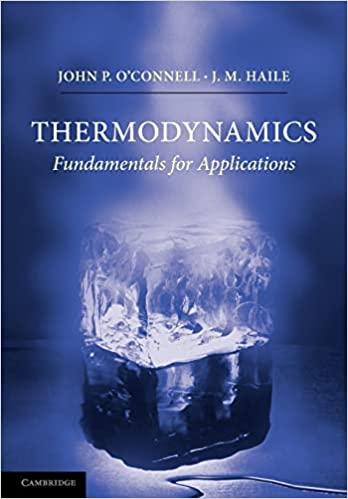Question
Having established the equilibrium data for pollen (Use the Henrys Law constant 3410 atm/mol fraction), you begin designing a prototype for the breathing air purifier.
Having established the equilibrium data for pollen (Use the Henrys Law constant 3410 atm/mol fraction), you begin designing a prototype for the breathing air purifier. Desiring portability, he imposes a constraint that the purifier will have no more than 3 equilibrium stages.
You learn that the average adult inhales 12 L of air per minute. You design the intake air valve to supply a molar flow rate of air that is consistent with this information.
Since pollen count data is highly variable and unpredictable (but always on the order of 100-1000 ppm), instead of designing the purifier based on a certain concentration of pollen, you decide to specify that 90% of the pollen will be removed from the air. To operate the device, the user fills a reservoir with fresh water. The water is run through the absorber, and the outlet water is collected in a second reservoir, which must be periodically emptied.
For operation at 25C and 1 atm, what is the required volumetric flow rate of water required (L/min)?
Step by Step Solution
There are 3 Steps involved in it
Step: 1

Get Instant Access to Expert-Tailored Solutions
See step-by-step solutions with expert insights and AI powered tools for academic success
Step: 2

Step: 3

Ace Your Homework with AI
Get the answers you need in no time with our AI-driven, step-by-step assistance
Get Started


